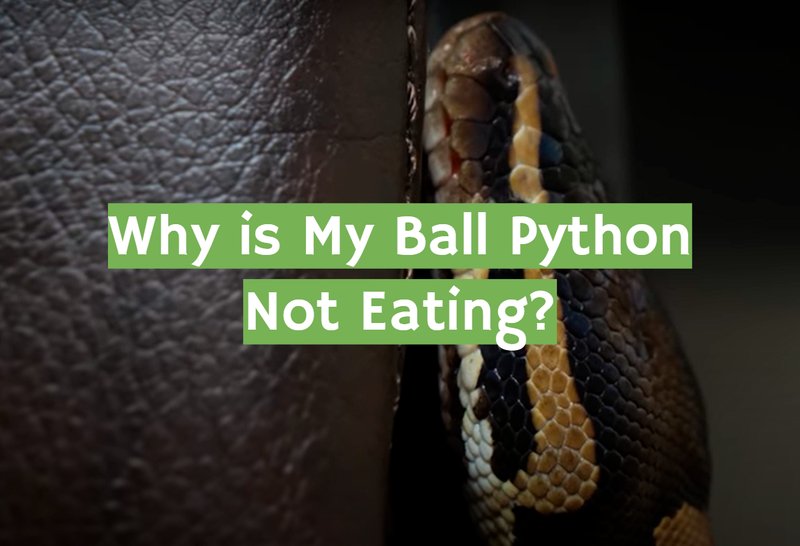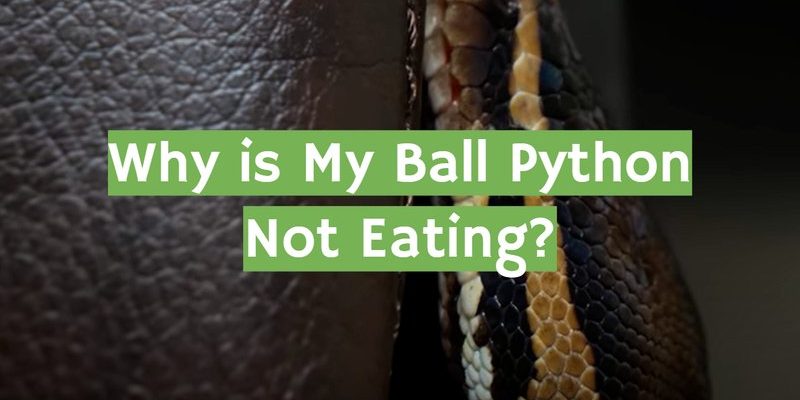
Think of it like a jigsaw puzzle—you have to look at different pieces to see the whole picture. From environmental factors to health issues, there’s a lot to consider. But don’t worry! In this guide, we’ll explore the common causes and practical solutions to help you get your ball python back to its normal eating routine.
Understanding Your Ball Python’s Natural Behavior
First off, let’s get to know a bit about ball pythons. These snakes are known for their docile nature and can be quite affectionate. However, they can also be tricky eaters at times. It’s important to remember that in the wild, ball pythons are not always in constant feast mode; they eat when they feel it’s necessary. Your pet might be mimicking this natural behavior!
Did you know that ball pythons can also go through a period of fasting? This is quite normal, especially for younger snakes during their shedding cycles or when they feel stressed. So if your python isn’t eating, it doesn’t necessarily mean something is wrong; it might just be part of their natural rhythm.
Furthermore, stress is a big player here. Changes in their environment, handling too often, or even a new home can put your snake on edge. Think about how you feel when you’re in a new place—it often takes some time to settle in.
Temperature and Environment Issues
One of the first things to check is the temperature in your python’s habitat. Ball pythons thrive best in a warm environment. If it’s too cold, they might stop eating entirely. Make sure the enclosure has both a warm side and a cool side to help your snake regulate its body temperature.
You might be wondering what the ideal temperatures are. Here’s a little breakdown:
- Warm side: 88°F to 92°F (31°C to 33°C)
- Cool side: 78°F to 80°F (25°C to 27°C)
- Humidity: 50% to 60% is ideal, with higher humidity during shedding
If your ball python is too cold, its metabolism slows down, and it won’t feel hungry. Use a reliable thermometer to keep track, and adjust heating elements as needed. Having proper heating pads or bulbs is essential to create the right environment.
Feeding Frequency and Schedule
Next, let’s chat about feeding frequency. Ball pythons don’t need to eat every day. In fact, many owners feed them once every one to two weeks. If you’re offering food too frequently or not on a regular schedule, it might discourage your python from eating.
Try to stick to a consistent routine. After all, who wants to eat when they aren’t sure when the next meal is coming? If your ball python is a juvenile, you might want to feed every 5 to 7 days, while adults usually do well with every 10 to 14 days.
Also, consider the size of the prey. If you’re giving them a meal that’s too large, it could be overwhelming. Generally, aim for prey that’s about the same width as the thickest part of your python’s body.
Type of Prey: What Are You Offering?
Speaking of meals, let’s talk about the type of prey you’re offering. Ball pythons mainly eat rodents like mice or rats. If you’re feeding them something outside their usual diet, they might turn their noses up. Some snakes also prefer live prey, while others do better with frozen-thawed options.
If you’re using frozen-thawed prey, ensure it’s completely warmed up before offering it. Snakes are more attracted to the scent of freshly killed animals, so make sure the prey is warm to the touch when you present it. You can warm it in lukewarm water or use a heat lamp for a short time.
Also, some ball pythons develop a strong preference for one type of prey. If your snake was raised on live mice, switching to frozen rats too quickly might confuse them. Be patient and try to introduce changes gradually.
Health Concerns to Keep in Mind
Let’s face it: *sometimes, not eating can be a sign of health issues*. It’s essential to observe overall behaviors and physical signs. If your python is lethargic or showing unusual behaviors like frequent hiding or mouth breathing, it could indicate a health problem.
Common issues include respiratory infections, parasites, or mouth rot. It’s important to consult a veterinarian who specializes in reptiles if you suspect any health issues. They can offer diagnostic tests that can help pinpoint the problem and provide the right treatment.
Remember, when it comes to health, it’s always better to be safe than sorry! Your ball python can’t communicate its discomfort, so keeping a close eye on its behavior is key.
Stress and Handling Issues
As mentioned earlier, stress can play a big role in your python’s eating habits. If your snake is handled too much, it could feel anxious, leading to a lack of appetite. It’s best to minimize handling, especially around feeding time.
Consider creating a calm atmosphere. Avoid loud noises, sudden movements, and bright lights around the enclosure. Your snake needs a safe space where it can feel secure and relaxed.
You might also want to consider its tank mates. If you have other reptiles in the same enclosure, they could be competing for space and resources, causing stress for your ball python. It’s often best to house them separately.
Final Thoughts: Patience is Key
In the end, remember that every ball python is unique. They might have their quirks and preferences, just like any other pet. The key to getting your snake back to eating is to pay close attention to its needs and environment.
Check the temperature, ensure the right feeding schedule, consider the prey type, and watch for any signs of stress or health issues. And most importantly, be patient. Your ball python will likely come around when it feels comfortable and secure in its environment.
So if your snake isn’t eating, don’t panic. Take a deep breath, review these factors, and adjust where necessary. You’ll have that little buddy back munching on meals in no time!

